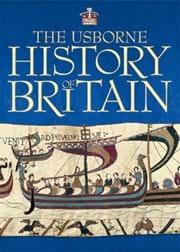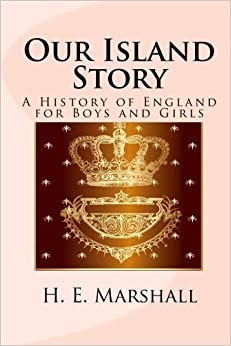Learning British History with British Resources
We’re big fans of Story of the World in my house. World history provides so much more context to historical events and I appreciate that my children’s experience of learning history is more nuanced than ‘my countrymen are the ‘good guys’ and those against us are the ‘bad guys.’’ This is so important in a mixed nationality household (nations with their own complicated history and current relationship)!
But Story of the World Volume 4 is a bit of a doozy. You begin to feel as if you’ve stopped looking at a timeline of human achievement and begun zeroing in on the worst of our human nature. War after rebellion after conquer makes the timeline. If you read around the blogosphere about it, a lot of families opt for American History in place of the fourth year of the history cycle. I read up to WWI in Vol 4 with Mr Ten while focusing heavily on Victorian Britain with Miss Seven so that they were roughly on the same timeline but receiving age-appropriate information. But WWI seemed to difficult to cover and maintain that filtering of information, I felt. So, I too stopped at Vol 4 and cast about for a way to learn British history together.
British History made easy with Usborne
I was pleasantly surprised that we could learn British History with nothing more than this book

We had bought The Usborne History of Britain when Mr Ten was seven, but we hadn’t managed to read much of it when a chance encounter with ancient Egyptian civilization captured him and we were set firmly down the world history path. This new history dilemma seemed an opportune time to pick it back up. And I am so glad that we did! I had thought I would need to build a curriculum with a spine, supplementary reading and viewing materials, scour Pinterest for craftivities, but I was pleasantly surprised that we could learn British History with nothing more than this book if we wanted to.
Details:
The Usborne History of Britain covers British History from the Ice Age to the Millenium. The information can be covered in either one to two years depending on whether you would like to take a month or six weeks (or more) for each chapter.
Chapters include: Prehistory (Ice – Iron Age), Roman Britain, The Early Middle Ages, The Middle Ages, Tudors and Stewarts, The Georgians, The Victorians, The Early Twentieth Century, The Second World War, Post War Britain
Recommended age: 8+
Supplementing The Usborne History of Britain
The set includes a ‘Fact file’ with recommended places to visit, fiction to read, television and films for each chapter. On the Usborne Quicklinks website you can also find supplementary links to YouTube videos, online games and recommended crafts/ activities for each chapter. Again, you could literally use just this book to teach a year’s worth of British History.
I appreciate that I don’t have to think too hard about making British History come to life with this book and all of its recommendations. I do like to personalise things a bit though! BBC Teach has beautiful animations on British History which Miss Seven, my visual learner, really appreciates. Also, BBC Bitesize are adding tons of new information while schools are closed. I’ve also included colouring sheets for each chapter for her, wherever possible, as these help her listen, and then she learns a lot more from the videos. We watch movies on Saturdays, so I sneak vaguely educational ones on Netflix/Prime in where I can (If you can call Early Man or Asterix films vaguely educational).
For Mr Ten I’ve included a blank map of Britain in A3 for us to label important sites as we read, as well as timelines to note important dates (a book of centuries would work as well) and for each chapter he has created mind maps to link important information together, like important figures, important inventions and other hallmarks of the time or civilization. This has cost us nothing but printer paper and ink.

I haven’t read Our Island Story, but I’ve only ever heard great things. This might save the expense of buying several fiction books on Amazon/Kindle/Audible while libraries are closed and simplify the supplementary reading element for a more rounded curriculum.
If you have a bit of scratch to spare, Christopher Lloyd’s What on Earth Wallbook Timeline of British History is really engaging. Miss Seven still isn’t much of a reader, but as a visual learner she could sit on the floor with this timeline asking questions about the pictures for ages. It’s not essential, but it certainly piques the interest of my history dismissive miss.
